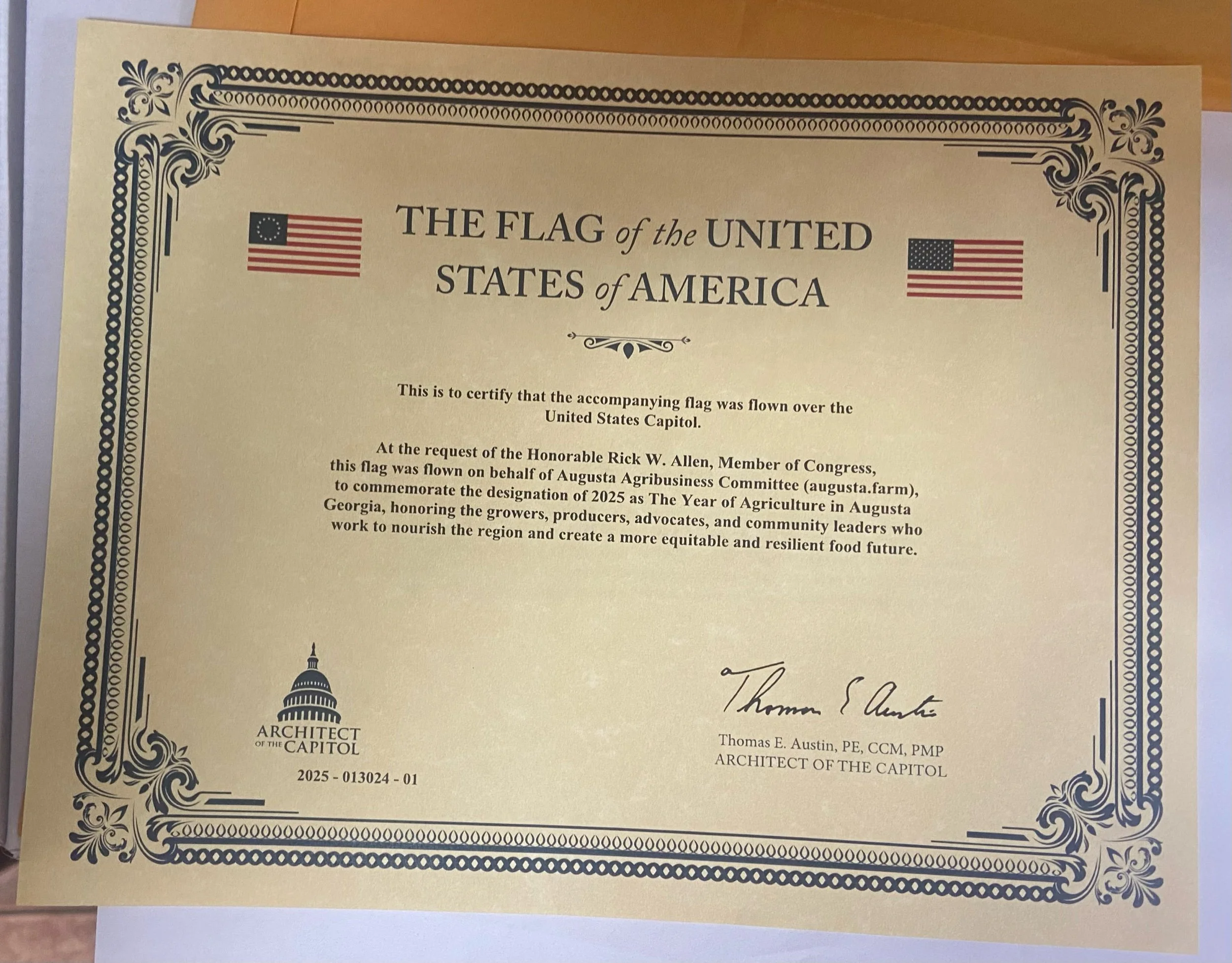C. Joy Johnson Brown is a deeply committed individual who leverages her expertise and passion for agriculture to foster community development, combat food insecurity, and promote sustainable practices. Her work at the Belle Terrace Community Garden and through her various leadership roles demonstrates a holistic approach that nourishes both the body and the spirit, driven by her faith and a strong desire to empower others.
Read MoreAt the request of the Honorable Rick W. Allen, Member of Congress, this flag was flown on behalf of Augusta Agribusiness Committee (augusta.farm), to commemorate the designation of 2025 as The Year of Agriculture in Augusta Georgia, honoring the growers, producers, advocates, and community leaders who work to nourish the region and create a more equitable and resilient food future.
Read MoreAt Southern Foodscapes, we believe your landscape should not only be beautiful and evergreen — it should feed you, too.
Read MoreIf you’re a small farm owner (or dreaming of becoming one), this post is for you. We're sharing how farm-based learning experiences can serve your community and generate a little extra income—without needing to host a full camp every month.
Read MoreAs a member of the Board of Directors for the Augusta GA Land Bank Authority, I see firsthand the challenges and untapped potential surrounding vacant land in our communities. Across Georgia, land banks hold numerous parcels—many of which sit in areas designated as food deserts. With strategic support from USDA, these parcels could be transformed into vibrant community gardens, training grounds for new farmers, or small-scale urban farms that address both food access and local economic development.
Read MoreA celebration of Augusta’s local farms, food producers, agri-businesses, and urban agriculture innovations.
Read MoreA celebration of Augusta’s local farms, food producers, agri-businesses, and urban agriculture innovations.
Read MoreAgriculture is evolving. While traditional farming has long been the foundation of food production, new and innovative approaches are reshaping how we grow and distribute food. Urban farms, hydroponics, aquaponics, permaculture, and agroforestry are just a few examples of nontraditional farming models that offer sustainable solutions for food security and environmental conservation.
Read MoreOn February 18, 2025, the Greater Augusta Black Chamber of Commerce hosted a Business Resource Fair, where the Agribusiness Committee welcomed Vontice Jackson, NRCS Outreach Director. She provided key updates on USDA programs and resources, reinforcing agriculture’s status as Georgia’s #1 industry.
Read More







